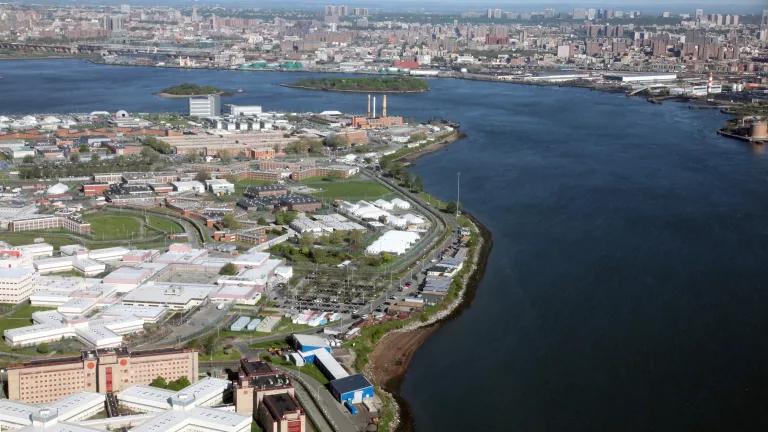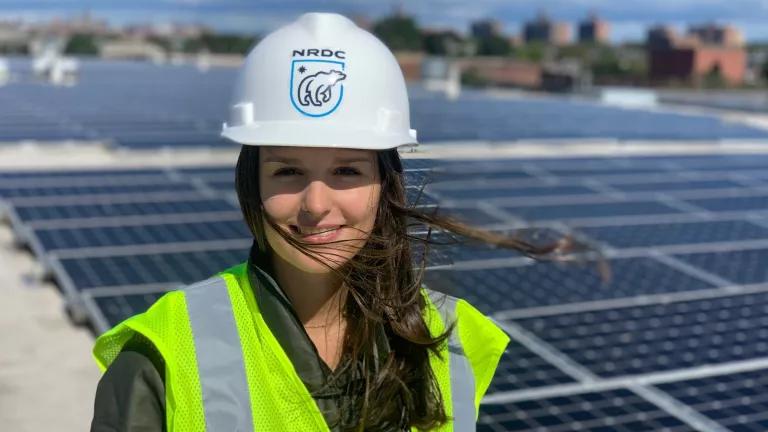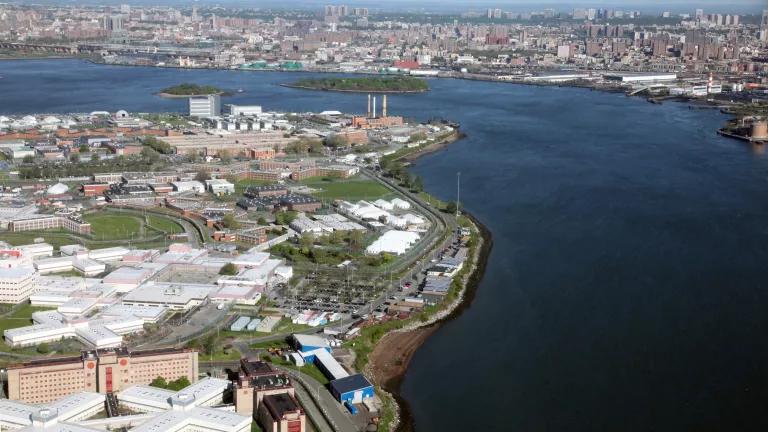
Getty Images
New York City is moving forward with first-of-its-kind legislation that would require substantial reductions in building energy use, putting the Big Apple squarely on the path to achieve its greenhouse gas reduction goals and serving as an important model for other cities around the country. Int. No. 1253, recently introduced in the New York City Council, would establish ambitious targets for the city’s mid- and large-sized buildings, resulting in extensive energy efficiency upgrades throughout more than half of the city’s building square footage.
A new, bold energy efficiency framework
With the tremendous threat of climate change and the extreme challenges we face with a Trump administration intent on rolling back even the most fundamental clean energy and climate initiatives, it is now more important than ever for cities and states to step up and take the lead. The sobering report by the United Nations’ Intergovernmental Panel on Climate Change (IPCC) and the new National Climate Assessment provide an even greater call to action, highlighting the devastating impacts of climate change and the urgent threat it poses. New York City is heeding that call.
The new legislation, introduced by Councilmember Constantinides and supported by Speaker Johnson, sets its sights on the most significant contributor to the city’s carbon footprint—buildings. The bill takes New York’s already impressive history of reducing energy consumption in existing buildings to the next level—providing a “next-generation” framework that will go beyond retro-commissioning and empowering building owners with information and data to better manage their energy use and reduce consumption. The legislation would require that building owners move forward with implementing energy efficiency upgrades, setting increasingly stringent “building emissions intensity” limits for buildings above 25,000 square feet to ensure this sector makes the necessary contributions to achieve New York City’s goals to reduce greenhouse gas emissions 40 percent by 2030 and 80 percent by 2050.
As is the case with many new introductions, there are some improvements that should be made to the bill as it goes through the legislative process. For example, we have concerns about the bill’s blanket exemption of buildings with any rent-regulated units from the imposed limits, which would remove a large swath of the multifamily building stock, calling into question the city’s ability to achieve its greenhouse gas reduction goals. These buildings are also often the ones that are most in need of upgrades and in which tenants could benefit from reduced energy costs. Of course, any framework that includes rent-stabilized housing must protect against displacement and maintain affordability while advancing energy efficiency.
Working in partnership
Forming what some may consider an unexpected partnership, NRDC, the Real Estate Board of New York (the state’s leading real estate trade association) and SEIU 32BJ (the largest property service workers’ labor union in the country) have been working together to develop ideas and solutions to help the city put in place an effective energy efficiency framework that is both ambitious and achievable. The effort is an outgrowth of the Urban Green 80x50 Buildings Partnership, in which our organizations participated, which recently developed a set of “recommendations for the City of New York on the optimal design of a building energy reduction policy.”
Though we may not always agree on everything, our organizations recognize: 1) the critical need to address climate change; 2) the central role buildings play in fighting this tremendous threat; and, 3) the golden opportunities that innovative solutions present. Energy efficiency—the cheapest, easiest, and fastest way to fight climate change while also delivering a number of other benefits like enhanced grid reliability and the reduction of other harmful pollutants – lowers building energy costs, while also providing more comfortable, appealing environments for tenants. Energy efficiency is also a leading workforce engine, creating good local jobs and accounting for nearly 120,000 jobs in New York state as of December 2017.
The real estate and labor communities provide key perspectives regarding how energy efficiency gets done on the ground and what’s needed so that owners, managers, and other building workers are equipped to ensure that energy savings and emissions reductions are realized. Financial and technical assistance for owners, as well as training for workers, are critical. The City Council has recognized that need, requiring the provision of assistance in Int. No. 1253, in addition to outreach and education. The Council is also advancing a parallel piece of legislation that would establish a New York City commercial Property Assessed Clean Energy (C-PACE) program, allowing New York City building owners to access a valuable tool by which they can finance energy efficiency retrofits and other clean energy measures through an assessment placed on their property tax bills.
Utility programs will also provide important resources for building owners as they work toward achieving the requirements included in Int. No. 1253. It is critical that the city, state and utilities integrate their efforts and programs to the greatest extent possible. The collaboration will not only be critical for the city to achieve the goals of the legislation, but for the state to achieve its ambitious energy efficiency targets, as well.
We need to take bold steps if we’re going to achieve our climate goals. By moving a landmark building energy efficiency framework forward, New York can show how America’s cities can be at the forefront of fighting the biggest environmental challenge of our time.




